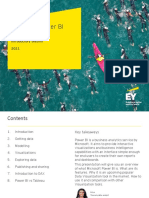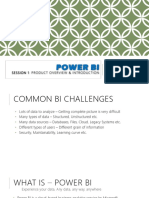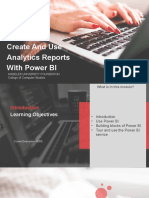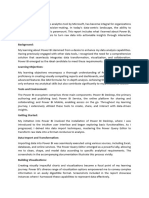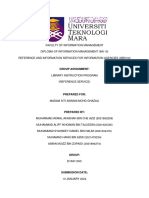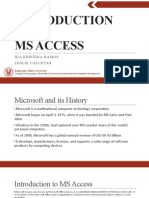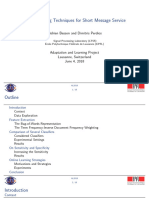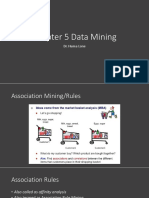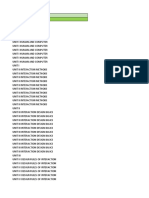0% found this document useful (0 votes)
72 views98 pagesLab1 Data Loading
The document discusses various business intelligence (BI) tools including Tableau, Informatica, MSBI, IBM Cognos, and Power BI. It provides descriptions of Power BI Desktop, what Power BI is capable of, the history and versions of Power BI, and how to get started with Power BI Desktop. Key points covered include how to import and model data, create reports and dashboards, and publish reports with Power BI.
Uploaded by
farwa habibCopyright
© © All Rights Reserved
We take content rights seriously. If you suspect this is your content, claim it here.
Available Formats
Download as PPTX, PDF, TXT or read online on Scribd
0% found this document useful (0 votes)
72 views98 pagesLab1 Data Loading
The document discusses various business intelligence (BI) tools including Tableau, Informatica, MSBI, IBM Cognos, and Power BI. It provides descriptions of Power BI Desktop, what Power BI is capable of, the history and versions of Power BI, and how to get started with Power BI Desktop. Key points covered include how to import and model data, create reports and dashboards, and publish reports with Power BI.
Uploaded by
farwa habibCopyright
© © All Rights Reserved
We take content rights seriously. If you suspect this is your content, claim it here.
Available Formats
Download as PPTX, PDF, TXT or read online on Scribd
/ 98




